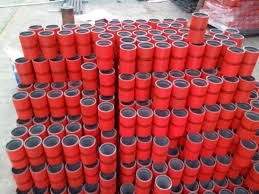- Afrikaans
- Albanian
- Amharic
- Arabic
- Armenian
- Azerbaijani
- Basque
- Belarusian
- Bengali
- Bosnian
- Bulgarian
- Catalan
- Cebuano
- Corsican
- Croatian
- Czech
- Danish
- Dutch
- English
- Esperanto
- Estonian
- Finnish
- French
- Frisian
- Galician
- Georgian
- German
- Greek
- Gujarati
- Haitian Creole
- hausa
- hawaiian
- Hebrew
- Hindi
- Miao
- Hungarian
- Icelandic
- igbo
- Indonesian
- irish
- Italian
- Japanese
- Javanese
- Kannada
- kazakh
- Khmer
- Rwandese
- Korean
- Kurdish
- Kyrgyz
- Lao
- Latin
- Latvian
- Lithuanian
- Luxembourgish
- Macedonian
- Malgashi
- Malay
- Malayalam
- Maltese
- Maori
- Marathi
- Mongolian
- Myanmar
- Nepali
- Norwegian
- Norwegian
- Occitan
- Pashto
- Persian
- Polish
- Portuguese
- Punjabi
- Romanian
- Russian
- Samoan
- Scottish Gaelic
- Serbian
- Sesotho
- Shona
- Sindhi
- Sinhala
- Slovak
- Slovenian
- Somali
- Spanish
- Sundanese
- Swahili
- Swedish
- Tagalog
- Tajik
- Tamil
- Tatar
- Telugu
- Thai
- Turkish
- Turkmen
- Ukrainian
- Urdu
- Uighur
- Uzbek
- Vietnamese
- Welsh
- Bantu
- Yiddish
- Yoruba
- Zulu
tubing and casing
Understanding Tubing and Casing in Oil and Gas Operations
In the oil and gas industry, the terms tubing and casing are fundamental to the drilling and production processes. These two components play crucial roles in ensuring the safe and efficient extraction of hydrocarbons from underground reservoirs. To fully appreciate their significance, it is essential to delve into the definitions, purposes, and differences between tubing and casing.
What is Casing?
Casing refers to the series of pipes that are installed in a wellbore after it has been drilled. The primary purpose of casing is to provide structural integrity to the well, preventing it from collapsing under the weight of the surrounding earth and rock. Additionally, casing serves several other critical functions
1. Isolation of Layers Casing isolates different geological formations, which is crucial for preventing the migration of fluids between them. This isolation protects both the well and the environment. 2. Pressure Control It helps to manage the pressure within the well, ensuring safe operations during drilling and production phases.
3. Well Integrity Casing maintains the integrity of the well throughout its life, providing a durable barrier against any potential leaks or blowouts.
Casing comes in various sizes and grades, with the most common types being surface casing, intermediate casing, and production casing. Each type serves a specific purpose depending on the depth and nature of the well.
What is Tubing?
In contrast, tubing refers to the smaller pipes inserted into the well after the casing has been installed. Tubing is specifically designed to transport hydrocarbons (oil and gas) from the reservoir to the surface. It is vital for the production phase of oil and gas operations and is distinct from casing in several ways
tubing and casing

1. Fluid Transport Tubing is designed to accommodate the flow of oil, gas, and sometimes water from the reservoir back to the surface. It is typically smaller in diameter than casing to allow for efficient fluid movement.
2. Ease of Maintenance Tubing can be more easily removed and replaced than casing. This feature is essential for maintenance and workover operations, allowing operators to address issues such as blockages or wear over time.
3. Pressure Ratings Tubing is built to withstand high pressures that occur during production. As production begins, pressure differentials caused by the extraction process can be significant, and tubing must be designed to handle these conditions.
Key Differences Between Tubing and Casing
The differences between tubing and casing are clear, yet they are often misconstrued due to their interconnectedness in the drilling process. Here are some key distinctions
- Functionality The primary purpose of casing is structural integrity and protection of the wellbore, while tubing is focused on the transport of hydrocarbons. - Installation Sequence Casing is installed first during the drilling process, followed by tubing once the well is completed. - Diameter and Thickness Casing pipes are generally larger and thicker than tubing pipes, as they need to withstand external pressures, whereas tubing must endure internal pressures.
Conclusion
In summary, tubing and casing are integral components of oil and gas operations, each serving specific and critical functions. Casing provides the necessary structural support and safety for the well, preventing geological hazards and environmental contamination. In contrast, tubing facilitates the efficient flow of hydrocarbons from the reservoir to the surface, enabling the production process. Understanding the roles and differences of these two components not only enhances our knowledge of drilling practices but also emphasizes the complexity and engineering expertise required in the oil and gas industry. As energy demands continue to grow, advancements in tubing and casing technology will remain essential in optimizing production and ensuring safety and environmental stewardship in hydrocarbon extraction.
-
Tubing Pup Joints: Essential Components for Oil and Gas OperationsNewsJul.10,2025
-
Pup Joints: Essential Components for Reliable Drilling OperationsNewsJul.10,2025
-
Pipe Couplings: Connecting Your World EfficientlyNewsJul.10,2025
-
Mastering Oilfield Operations with Quality Tubing and CasingNewsJul.10,2025
-
High-Quality Casing Couplings for Every NeedNewsJul.10,2025
-
Boost Your Drilling Efficiency with Premium Crossover Tools & Seating NipplesNewsJul.10,2025







